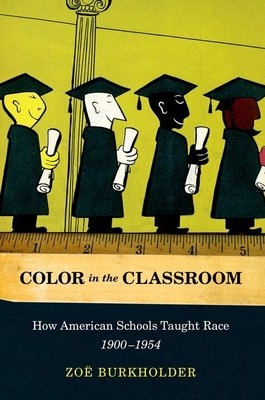
- We will send in 10–14 business days.
- Author: Zoe Burkholder
- Publisher: Oxford University Press, USA
- ISBN-10: 0190209321
- ISBN-13: 9780190209322
- Format: 15.5 x 23.4 x 1.8 cm, softcover
- Language: English
- SAVE -10% with code: EXTRA
Reviews
Description
Between the turn of the twentieth century and the Brown v. Board of Education decision in 1954, the way that American schools taught about "race" changed dramatically. This transformation was engineered by the nation's most prominent anthropologists, including Franz Boas, Ruth Benedict, and Margaret Mead, during World War II. Inspired by scientific racism in Nazi Germany, these activist scholars decided that the best way to fight racial prejudice was to teach what they saw as the truth about race in the institution that had the power to do the most good-American schools. Anthropologists created lesson plans, lectures, courses, and pamphlets designed to revise what they called "the 'race' concept" in American education. They believed that if teachers presented race in scientific and egalitarian terms, conveying human diversity as learned habits of culture rather than innate characteristics, American citizens would become less racist. Although nearly forgotten today, this
educational reform movement represents an important component of early civil rights activism that emerged alongside the domestic and global tensions of wartime.
EXTRA 10 % discount with code: EXTRA
The promotion ends in 17d.08:35:55
The discount code is valid when purchasing from 10 €. Discounts do not stack.
- Author: Zoe Burkholder
- Publisher: Oxford University Press, USA
- ISBN-10: 0190209321
- ISBN-13: 9780190209322
- Format: 15.5 x 23.4 x 1.8 cm, softcover
- Language: English English
Between the turn of the twentieth century and the Brown v. Board of Education decision in 1954, the way that American schools taught about "race" changed dramatically. This transformation was engineered by the nation's most prominent anthropologists, including Franz Boas, Ruth Benedict, and Margaret Mead, during World War II. Inspired by scientific racism in Nazi Germany, these activist scholars decided that the best way to fight racial prejudice was to teach what they saw as the truth about race in the institution that had the power to do the most good-American schools. Anthropologists created lesson plans, lectures, courses, and pamphlets designed to revise what they called "the 'race' concept" in American education. They believed that if teachers presented race in scientific and egalitarian terms, conveying human diversity as learned habits of culture rather than innate characteristics, American citizens would become less racist. Although nearly forgotten today, this
educational reform movement represents an important component of early civil rights activism that emerged alongside the domestic and global tensions of wartime.


Reviews